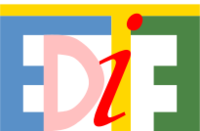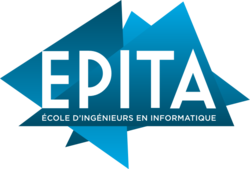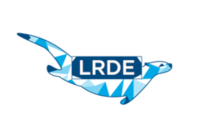PhD Defense Lê Duy HUỲNH
From LRDE
Abstract:
With the rising need for a higher understanding of images, the pixel-based representation is not enough. To answer this, the mathematical morphology framework provides several multi-scale, region-based image representations which include the hierarchies of segmentation (e.g., alpha-tree, BPT) and trees based on the threshold decomposition (Min/Max-trees and Tree of Shapes). Because objects in the real world rarely appear in isolation but a typical context with other related objects, we should consider the spatial relationships between image regions.
We are interested in two type of relationship, namely the inclusion and adjacency (in the sense of ``being nearby) since they usually carry contextual information. The adjacency between regions gives us a sense of how regions are arranged in images and have been widely used. On the other hand, while fitting the human's perception of the object-background relationship: the objects are included in their background, the inclusion relationship is usually not taken into account. Both these drastic information opens up possibilities for image analysis. In this thesis, we take advantage of both inclusion and adjacency information in morphological hierarchical representations for computer vision applications.
We introduce the spatial alignment graph w.r.t inclusion (SAG) that is constructed from both inclusion and spatial arrangement of regions in the tree-based image representations.
For simple scenes, we introduce the Tree of Shapes of Laplacian sign. It encodes the inclusion of 0-crossing of a Morphological Laplacian map and performs well even in the case of uneven illumination. The ToSoL is computed in linear time w.r.t the number of pixels thanks to an optimization that mimics well-composedness. In this representation, the spatial alignment graph is reduced to a disconnected graph where each connected component is a semantic group of objects.
For higher detail representation, the spatial alignment graph becomes more complex. To address this issue, we expand the idea of the shape spaces morphology. Our expansion has two primary results: 1) It allows the manipulation of any graph of shapes that encode different information, which encompasses the SAG. 2) It allows any tree filtering strategy proposed by the connected operators frameworks. Within this expansion, the SAG could be analyzed with an alpha-tree.
We demonstrated the application aspect of our method in text detection. The experiment results show the efficiency and effectiveness of our methods, which robust to noise, blur, or uneven illumination. These features are appealing to mobile applications.
Keywords: discrete topology, mathematical morphology, hierarchies, tree of shapes, hierarchy of segmentation, connected filters, text detection.
PhD thesis:
Report: Copy of Thesis
Composition du Jury :
Président du jury :
- Laurent NAJMAN , Pr., l'Université Paris-Est, LIGM
Rapporteurs :
- Beatriz MARCOTEGUI, Pr., MINES ParisTech, CMM
- Hugues TALBOT, Pr., CentraleSupelec, CVC
Examinateurs :
- Isabelle BLOCH, Pr., Telecom ParisTech, LTCI
- Camille KURTZ, MdC, Université Paris Descartes, LIPADE
Directeurs de thèse :
- Thierry GÉRAUD, Pr., EPITA, LRDE
- Yongchao XU, MdC, HUST, Chine, MCLab



